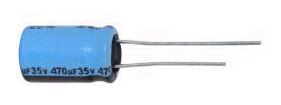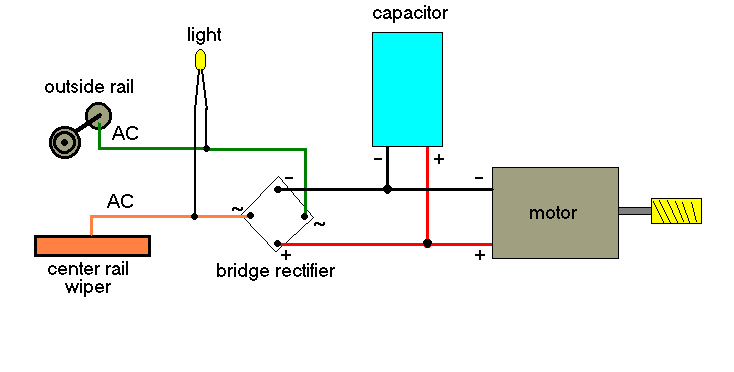

Electrolytic capacitors need to be used with care because, like all electronic components, there are risks. An electrolytic capacitor (polarized) must never receive reversed polarity, or it will explode. A capacitor must never receive voltage over its rating, or it will explode. A good rule of thumb is to use a voltage rating at about 2-3 times the voltage it may receive, for absolute safety. And they are for the DC side of a circuit, not AC. And capacitors will eventually need to be replaced. Under certain circumstances, they may leak the electrolyte.
When a circuit using a capacitor is receiving rectified AC, there will be an amount of AC still getting through to the capacitor, so unlike a circuit on filtered DC, the capacitor is passing more "ripple current." So that is why I like to size them upward by at least twice, because we use AC power for toy trains most of the time. On the advice of an old-timer, I always size components upwards after minimum ratings are calculated, so I prefer the "3 times" rule. With the Bi-polar cap I use with the Lionel reversing board, the rating is only 16 V (that's as high as the voltage rating goes with that amount of capacitance), so I am only comfortable giving it no more than 8 volts to the track (which is only twice the maximum voltage). Now if the handcar is run on filtered DC, the cap will handle voltages closer to its rating with ease, but still the cap should be rated at about 2 times the input voltage, at least.
If you notice that the capacitor is getting warm, then its voltage rating must be sized upward. If a bi-polar cap gets warm, don't use it if you can't size the voltage rating upward. Always protect eyes, face, and fingers when building and testing circuits, and please read the disclaimer below! Remember, capacitors are used safely in almost every electronic device we use today, so no need to fear them, just have a healthy respect for anything that has potential dangers!


The site owner is not and cannot be held liable for fire, electrical shock, property damage, bodily injury, loss of life, or accident of any kind caused by electrical circuits or any ideas, projects, techniques, or information contained on this site.
The visitor assumes all risk and responsibility for any loss, injury, accident or damage arising from the use of information, ideas, techniques, projects, concepts, components, products, and circuits on this site.
Please refer to hobby reference materials for correct and safe use information
regarding these and all electronic circuits. These diagrams are intended to explain how things were accomplished in theory, but it is the
responsibility of the individual to locate precise information regarding electrical circuits, materials, ratings of components, etc. Do not attempt
these hobby projects, or any electrical project, if you don't have the necessary skills and experience.